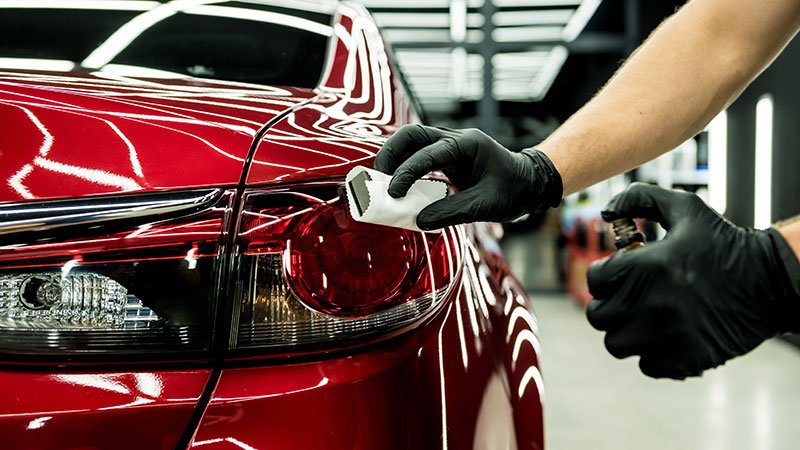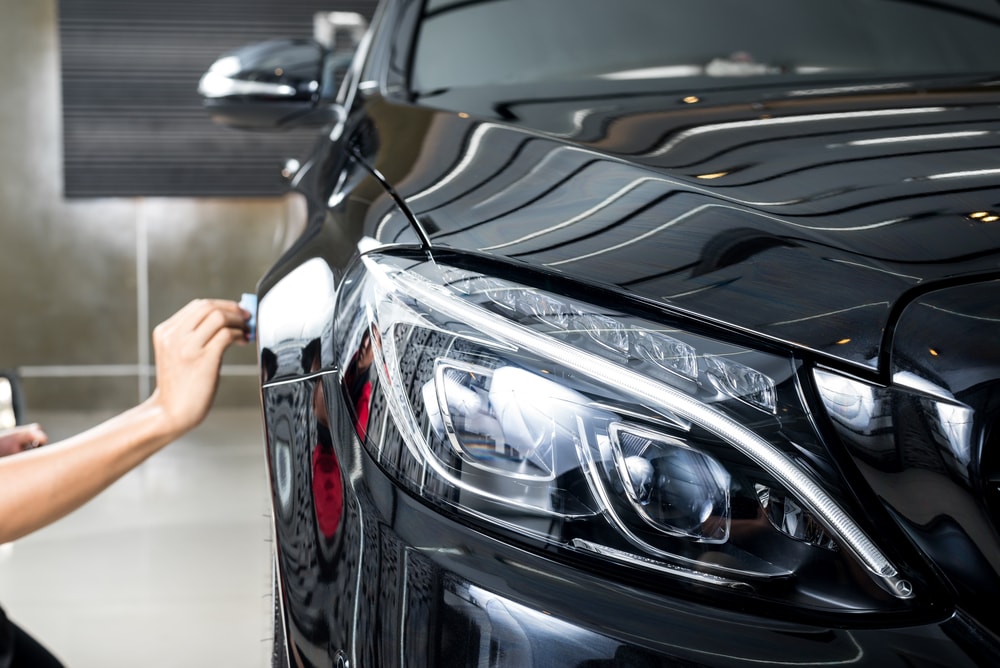Leading Ceramic Coatings San Jose to Shield Your Car's Paint
Leading Ceramic Coatings San Jose to Shield Your Car's Paint
Blog Article
Revealing the Scientific Research Behind Ceramic Coatings: How Does It Job and Why Is It Above Typical Alternatives?
Ceramic finishes have actually been gaining popularity in various markets for their phenomenal performance and resilience. The science behind these finishes surpasses plain surface area protection, delving into the intricate chemistry that makes them stick out from standard alternatives (ceramic coatings san jose). Recognizing how ceramic coverings job and why they exceed standard alternatives is vital for those looking for to enhance the long life and resilience of their materials. What precisely sets ceramic coverings apart, and how do they attain such impressive outcomes?
The Chemistry of Ceramic Coatings
In recognizing ceramic layers, delving into the detailed chemistry behind their make-up is vital for comprehending their capability and toughness. Ceramic finishings are mainly made up of silicon dioxide (SiO2), which develops a safety and strong layer when applied to numerous surface areas. This chemical structure gives outstanding resistance to warmth, chemicals, and corrosion, making ceramic layers extremely looked for after for a variety of applications.
The chemistry behind ceramic coverings entails the formation of covalent bonds between silicon and oxygen atoms, developing a rigid network that improves the coating's durability and durability. Furthermore, the visibility of other aspects such as light weight aluminum, zirconium, and titanium further boosts the layer's residential properties, supplying enhanced firmness and bond to surface areas.
Comprehending the chemical make-up of ceramic layers permits the customization of formulas to match particular requirements, whether it be for automotive, commercial, or domestic objectives. By harnessing the power of chemistry, ceramic layers remain to lead the method for superior defense and efficiency in numerous markets.
Advantages of Ceramic Coatings

As a result, ceramic layers make cleansing and preserving surface areas much less complicated and less taxing. On the whole, the wide variety of advantages supplied by ceramic layers make them a remarkable choice contrasted to traditional coating approaches.
How Ceramic Coatings Bond
Ceramic layers bond to surfaces through a procedure that involves molecular attachment and chemical interactions. When a ceramic layer is put on a surface area, it develops a solid bond by chemically sticking to the surface at a molecular degree. This bond is produced via the development of covalent bonds, which are long lasting and very strong. The ceramic finish's molecules pass through the pores of the surface area, producing a tight grip that withstands splitting up.
In addition, his explanation the chemical communications between the ceramic finishing and the surface further boost the bond. ceramic coatings san jose. These communications enable the ceramic covering to create a smooth and continual layer externally, offering superb defense and toughness. Unlike typical finishes that may remain on the surface area without fully Visit Your URL bonding, ceramic coatings develop a long-term bond that is resistant to chemicals, UV rays, and harsh ecological conditions

Fundamentally, the bonding device of ceramic coverings ensures a durable and efficient protective layer that surpasses typical finish options. This premium bond adds to the durability, scrape resistance, and longevity of ceramic layers, making them a favored selection for different applications.
Durability of Ceramic Coatings
The phenomenal durability of ceramic layers comes from their durable molecular attachment and chemical communications with surface areas, guaranteeing a sturdy protective layer that exceeds traditional finishing choices. Once used, ceramic coatings create a strong bond with the substratum, creating a durable obstacle versus various environmental stress factors such as UV radiation, chemicals, and abrasions. This bond is so secure that it can endure the roughness of day-to-day use without weakening or weakening quickly.
Unlike typical coatings that may break down over time, ceramic coatings keep their integrity for an extended duration, giving resilient security for the underlying surface area. Overall, the remarkable resilience of ceramic finishes makes them a superior choice for shielding a vast variety of surfaces in numerous applications.
Ceramic Coatings Vs. Standard Options
In contrast why not try here to conventional covering methods, ceramic coverings use an unique mix of longevity and safety capacities that establish them apart in various surface area security applications. Conventional alternatives such as wax or sealers offer a short-lived layer of protection that can use off swiftly, requiring regular reapplication. On the various other hand, ceramic coatings create a strong bond with the surface area, developing a permanent or semi-permanent obstacle that is extremely resistant to abrasion, chemicals, UV rays, and extreme temperature levels.
In addition, ceramic coverings offer superior hydrophobic residential properties contrasted to conventional coverings. The hydrophobic nature of ceramic coverings causes water to grain up and roll off the surface area, carrying dust and impurities with it. This self-cleaning result helps to preserve the surface's sanitation and gloss for extensive durations, decreasing the need for constant maintenance.
Additionally, ceramic layers have a thicker layer contrasted to conventional options, giving improved scratch resistance and defense against small effects. This resilience ensures resilient performance and aids preserve the visual charm of the dealt with surface for an extensive period.
Conclusion
To conclude, the science behind ceramic layers exists in their chemical composition and bonding properties, making them above conventional alternatives. The benefits of ceramic coatings include enhanced toughness and protection for surfaces. By recognizing how ceramic finishings job and their benefits over conventional choices, one can make informed choices when thinking about finish choices for numerous applications.
Unlike conventional layers that might sit on the surface without fully bonding, ceramic layers produce a permanent bond that is resistant to chemicals, UV rays, and harsh ecological conditions.
The outstanding longevity of ceramic coatings stems from their robust molecular bond and chemical interactions with surfaces, making certain a resilient protective layer that surpasses typical coating options.Unlike standard layers that might degrade over time, ceramic coverings maintain their stability for a prolonged period, offering resilient security for the underlying surface.In comparison to traditional finishing techniques, ceramic finishes use an unique mix of toughness and safety capacities that establish them apart in numerous surface area security applications. By comprehending exactly how ceramic finishings work and their advantages over traditional options, one can make informed choices when taking into consideration coating alternatives for numerous applications.
Report this page